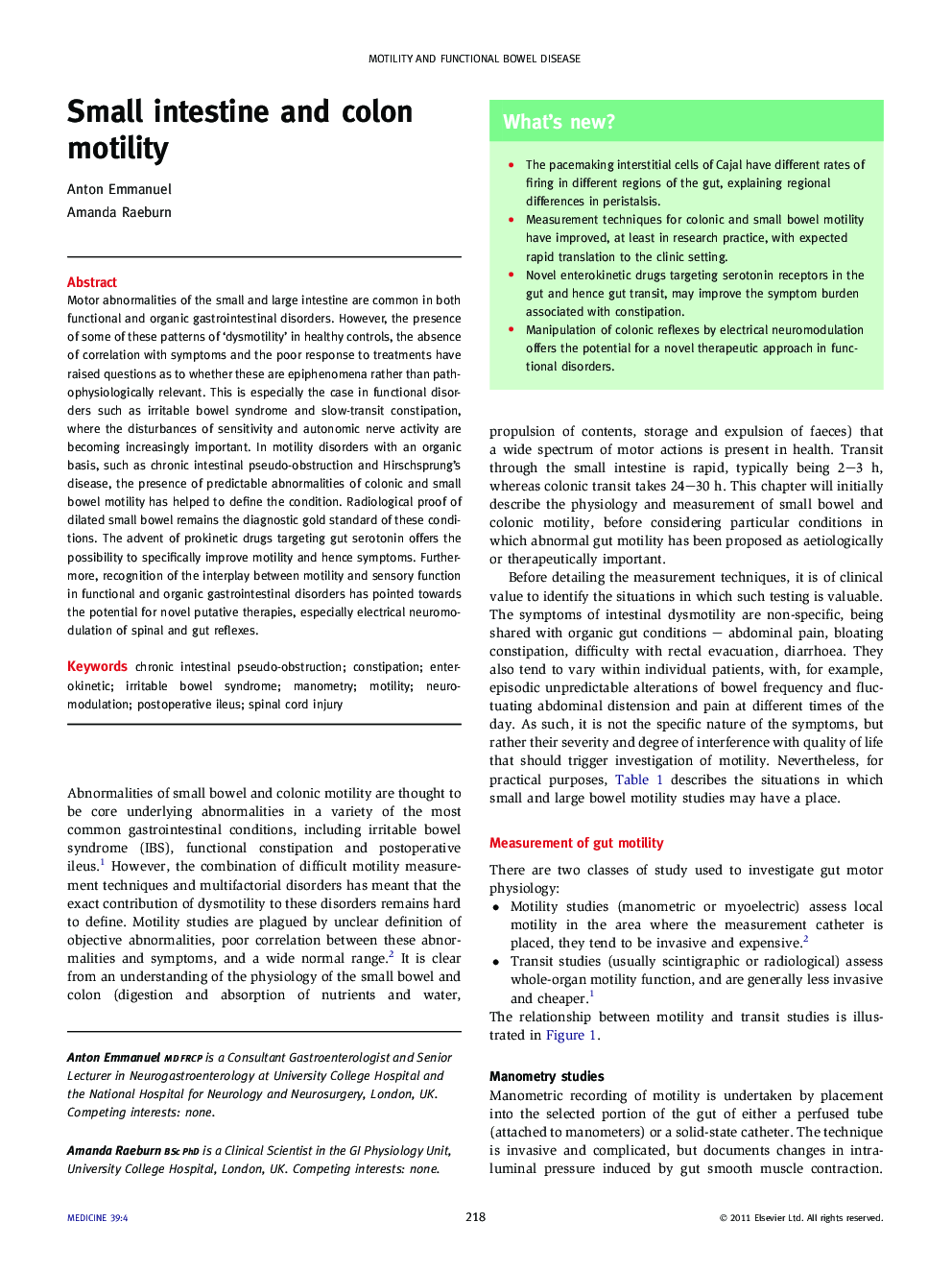| Article ID | Journal | Published Year | Pages | File Type |
|---|---|---|---|---|
| 3804189 | Medicine | 2011 | 6 Pages |
Motor abnormalities of the small and large intestine are common in both functional and organic gastrointestinal disorders. However, the presence of some of these patterns of ‘dysmotility’ in healthy controls, the absence of correlation with symptoms and the poor response to treatments have raised questions as to whether these are epiphenomena rather than pathophysiologically relevant. This is especially the case in functional disorders such as irritable bowel syndrome and slow-transit constipation, where the disturbances of sensitivity and autonomic nerve activity are becoming increasingly important. In motility disorders with an organic basis, such as chronic intestinal pseudo-obstruction and Hirschsprung's disease, the presence of predictable abnormalities of colonic and small bowel motility has helped to define the condition. Radiological proof of dilated small bowel remains the diagnostic gold standard of these conditions. The advent of prokinetic drugs targeting gut serotonin offers the possibility to specifically improve motility and hence symptoms. Furthermore, recognition of the interplay between motility and sensory function in functional and organic gastrointestinal disorders has pointed towards the potential for novel putative therapies, especially electrical neuromodulation of spinal and gut reflexes.
